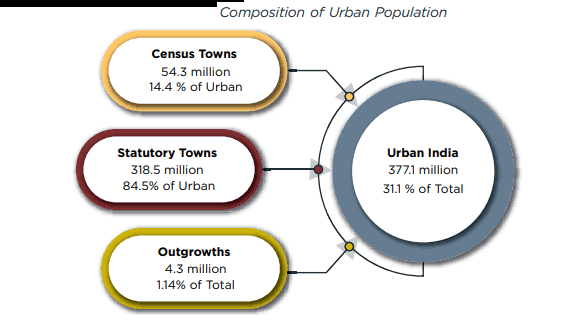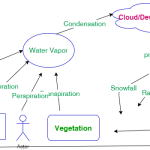
- Due to rapid urbanisation — Fallow land is deceasing as that erstwhile fallow land is being utilised now for constriction work
- Bangalore — seen a staggering 80% decline in the wetland cover due to urbanisation
- Western Ghats — KL, Mumbai — bad examples of urbanisation
When the Urbanisation went horrible wrong — CHENNAI 2019 WATER CRISIS
“India’s Urbanisation is largely ‘messy and hidden’ ” — WB Report
- Indian Census 2011 reports that urban population is 31%, while the WB report measures this number to be around 55.3%
- WB used the international standards which are globally used to measure the urban concentration.
- Why this difference? (55% and 31%)
- Because in leading metro cities of India (D M K C), most of the population growth happened at the fringes which are often outside the administrative boundary of the District.
- Such areas have urban characteristics but fall short on criteria required to be classified officially as urban.
- Seven largest metropolitan areas of the country saw a 16 per cent decline in manufacturing jobs between 1998 and 2005 within 10 km of their city centres while in the peripheries it increased by 12 per cent.Basically cities are growing at the peripheries and this growth is undocumented in the official records!
- Boom in number of Slums — 1/7 people in urban areas lives in the slums.
- Congestion because of unplanned development is another problem faced in urban metros.
- Smart Cities Mission — rightly aims to develop the existing towns, instead of creating new ‘ghost towns’ as in China.
- Urban Population of South Asia grew by 130 million from 2000 to 2010
| Rapid Urbanisation across the world — UN Study (data)Around 55% of the world population now lives in urban areas About 1.4 million people are moving to cities every week This rising trend calls for a proper urban planning and building a sustainable city Focus should also be towards developing villages — PURA |
Transit-Oriented Development (TOD)
- In urban planning, a transit-oriented development (TOD) is a type of urban development that maximizes the amount of residential, business, and leisure space within walking distance of public transport
- In doing so, TOD aims to increase public transport ridership by reducing the use of private cars and by promoting sustainable urban growth
- A TOD typically includes a central transit stop (such as a train station, or light rail or bus stop) surrounded by a high-density mixed-use area, with lower-density areas spreading out from this center — outward spiral
National TOD Policy
- Focus on development of Metros, Monorail, Bus Rapid Transport (BRT) system
- Under new Metro Policy TOD is made necessary and also in Green Urban Mobility Scheme
- States/UTs have to incorporate TOD in their Master Development Plans and identify ‘influence zones’
- Develop an in-depth understanding of the process and problem of urbanisation
- Increase the role of private players and their investments










![UPSC CSE Topper Mains Answer [Part 1] images-2023-06-17T191749.185](https://iasbio.com/wp-content/uploads/2023/06/images-2023-06-17T191749.185-150x150.jpeg)
![UPSC CSE Topper Mains Answer [Part 2] images-2023-06-17T192027.770](https://iasbio.com/wp-content/uploads/2023/06/images-2023-06-17T192027.770-150x150.jpeg)




